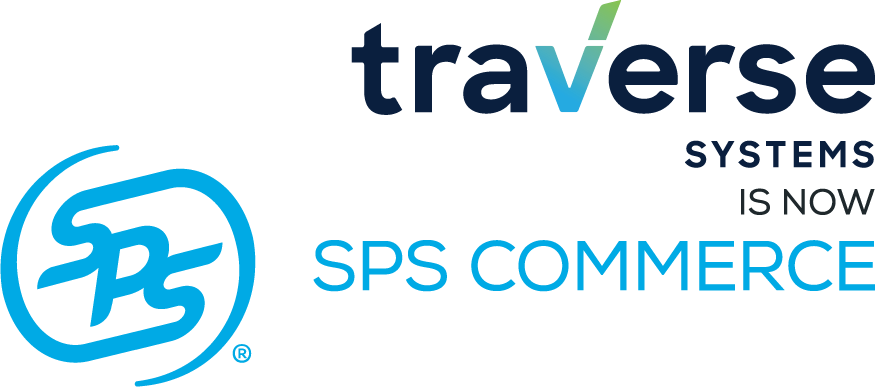
What is the Meaning of RTV? How to Return to Vendor - with Real RTV Examples
Introduction
In the ever-evolving world of retail and supply chain management, understanding the intricacies of processes like Return to Vendor (RTV) is crucial for businesses striving for efficiency and customer satisfaction. This blog delves into the meaning of RTV, explores its significance in retail, outlines efficient RTV processes, and provides a real-world example that you can learn from to revolutionize your RTV processes.
What is RTV?
First things first. Return to Vendor, commonly abbreviated as RTV, refers to the process where retailers return unsold or defective products back to their suppliers or vendors. This process is a critical aspect of inventory management, aiming to reduce losses, optimize stock levels, and maintain quality standards. Understanding RTV is essential for businesses to maintain productive relationships with vendors and ensure a streamlined supply chain.
Overview of the RTV Process
The Return to Vendor (RTV) process is a multi-step operation integral to inventory management and quality assurance in retail. It involves several key stages, each crucial to the seamless execution of returning products to suppliers or manufacturers. Below, we break down these stages:
Identification of Returnable Items
- Assessment of Inventory: Regular inventory checks to identify overstocked, outdated, or defective items.
- Quality Control: Rigorous inspection for defects, damage, or quality issues that warrant a return.
Approval and Documentation
- Approval Process: Seeking necessary approvals within the organization based on predefined RTV criteria.
- Documentation: Preparing detailed documentation, including reason for return, product condition, and quantity.
Vendor Communication
- Initiating Contact: Informing the vendor about the intended return and discussing the terms.
- Negotiation of Terms: Agreement on return conditions, restocking fees, and potential replacements or refunds.
Logistics Coordination
- Return Merchandise Authorization (RMA): Obtaining RMA from the vendor, which is often essential for tracking and processing the return.
- Shipping Arrangements: Organizing logistics for the return shipment, including packaging and transport.
Execution of the Return
- Dispatching Goods: Sending the items back to the vendor as per the agreed terms.
- Tracking Shipment: Monitoring the return shipment to ensure safe and timely delivery to the vendor.
Financial Reconciliation
- Adjusting Accounts: Updating financial records to reflect the return, including any credits or refunds.
- Inventory Update: Adjusting inventory levels in the system post-return.
Analysis and Feedback
- Performance Review: Analyzing the efficiency of the RTV process for continuous improvement.
- Vendor Feedback: Sharing insights and feedback with vendors to improve product quality and reduce future returns.
By meticulously following these steps, retailers can ensure an efficient and effective RTV process, minimizing financial losses and maintaining a healthy inventory level. This systematic approach not only aids in optimal stock management but also fosters strong vendor relationships and contributes to overall customer satisfaction.
The Importance of RTV in Retail
While RTV is a key part of any supply chain, return to vendor processes are critical in retail management. Over the last few years, RTV software and automation have emerged as key drivers of value for the retail industry. These technologies not only streamline operations but also contribute significantly to cost savings and customer satisfaction, making them indispensable even for small retailers.
Efficiency in Operations
- Automated Tracking: Software solutions provide automated tracking of inventory, simplifying the identification of returnable items.
- Quick Processing: Automation accelerates the RTV process, reducing the time taken from identification to dispatch.
Cost Reduction
- Minimizing Errors: Automation helps in reducing human errors in documentation and processing, which can be costly.
- Optimized Inventory Management: Efficient RTV processes maintain optimal inventory levels, reducing holding costs and freeing up capital.
Data-Driven Decisions
- Insightful Analytics: RTV software offers analytics that helps understand return patterns and proactive decision-making.
- Vendor Performance Tracking: Retailers can monitor vendor issues, negotiate better terms, and make informed partnership choices.
Enhanced Vendor Relations
- Transparent Communication: Automated systems ensure timely and accurate communication with vendors, strengthening relationships.
- Compliance and Accountability: Automation aids in adhering to vendor return policies and fosters accountability.
Customer Satisfaction
- Quality Assurance: Efficient management of returns ensures the sale of high-quality products, enhancing customer trust.
- Responsive Service: Quick RTV processes can lead to faster resolutions of customer issues.
Scalability for Growth
- Adaptable Systems: Automated RTV systems are scalable, supporting business growth without significant resource investment.
- Cross-Functional Integration: Integration with other business systems like CRM or ERP enables a cohesive retail management approach.
Software and automation in RTV processes are transformative for retailers. They bring efficiency, cost-effectiveness, and enhanced customer satisfaction, which are crucial for businesses of all sizes in today's competitive landscape.
Real-World RTV Example: GNC and Rivet™
A prime example of efficient RTV in action is GNC's deployment of the Rivet™ system. Faced with challenges like limited visibility into returned products and lack of accountability, GNC implemented Rivet™ to gain immediate insight into redundant inventory and return trends. This integration led to improved coordination between accounting, distribution centers, and vendors, ultimately enhancing productivity and reducing unproductive inventory. GNC's experience with Rivet™ offers a valuable case study in optimizing RTV.
Challenge
Before implementing Rivet™, GNC faced several challenges in their RTV process:
- Limited Visibility: GNC had minimal insight into the quantity of products being returned to vendors. This lack of transparency led to inefficiencies and unproductive inventory.
- Accountability Issues: With no clear system in place, there was confusion regarding who was responsible for managing this inventory, resulting in lost follow-ups on returns.
- Financial Oversight Gaps: The accounting department struggled with a lack of visibility into the RTV process, making it difficult to track financial impacts.
Solution
Rivet™ was deployed as a comprehensive solution to address these challenges:
- Streamlined Inventory Management: Rivet™ provided a clear overview of redundant inventory, enabling better management of stock levels.
- Enhanced Visibility and Accountability: The intuitive dashboard of Rivet™ brought transparency to the process, clearly highlighting responsibilities and necessary actions for resolving issues.
- Seamless Integration and Training: Despite a high turnover in several departments at GNC, the intuitive nature of Rivet™ facilitated minimal training and easy adoption across the organization.
Outcome
The implementation of Rivet™ at GNC led to significant improvements:
- Operational Efficiency: GNC observed an immediate increase in efficiency in managing returns. The streamlined process reduced time wasted in following up on inventory anomalies and chasing vendors.
- Financial Improvements: The clear visibility into the return process allowed the accounting department to better track and manage financial implications, contributing to cost savings.
- Business Growth and Opportunities: With standardized data entry and ease of use, Rivet™ opened doors for further application across different departments within GNC, suggesting its scalability and adaptability to various business needs.
GNC's experience with Rivet™ demonstrates the profound impact that an effective RTV solution can have on a retailer's operational efficiency, financial management, and overall business growth.
Conclusion
Understanding and implementing efficient RTV processes is essential for any retailer aiming for operational excellence. With the right strategies and tools, like those offered by Traverse Systems, businesses can turn the challenge of returns into an opportunity for improvement and growth. Embrace the expertise of Traverse Systems and transform your RTV processes today.
About Traverse Systems
As experts in RTV processes, Traverse Systems offers unparalleled expertise and technological solutions. Founded in 2000, the team comprises engineers, operators, and industry experts dedicated to building enterprise solutions that redefine business partnership management and supply chain success. Serving prominent brands like CVS, Burlington Stores, and Kohl’s, Traverse Systems specializes in mitigating operational risks and optimizing performance with cutting-edge technology and insights.
In today's fast-paced retail environment, staying ahead in efficiency and supply chain management is key. Traverse Systems is offering a free RTV Process Evaluation to help you streamline your RTV processes and improve your bottom line. Contact us to learn how we can tailor our expertise to your unique business needs.


